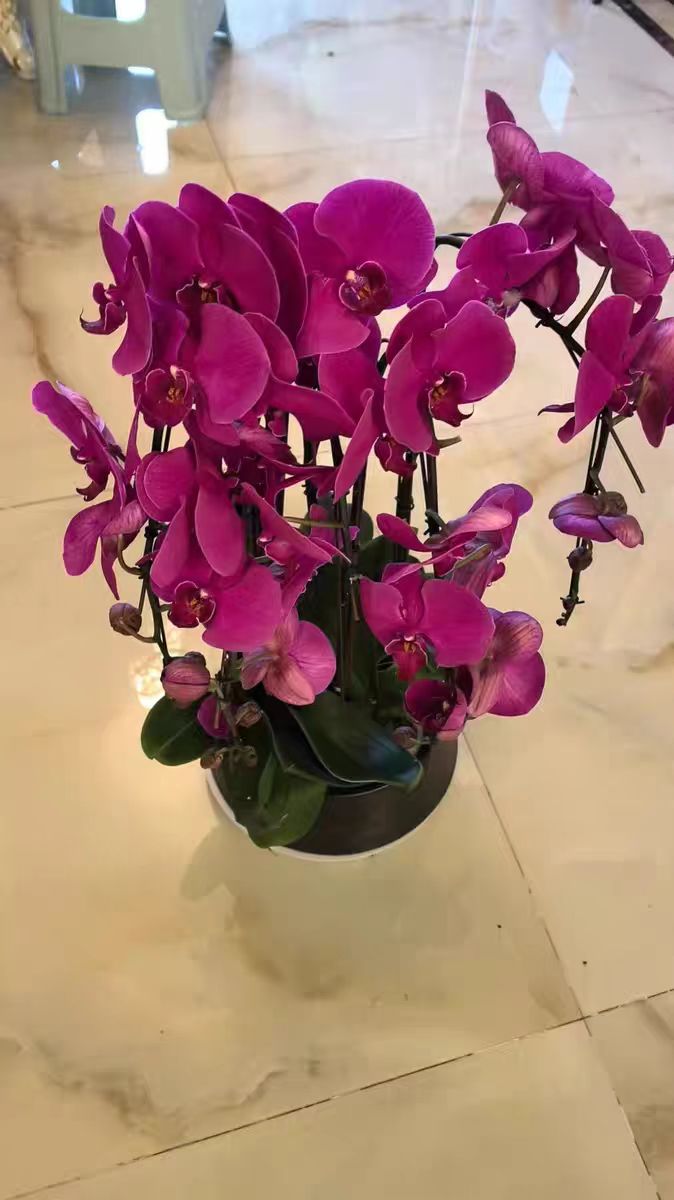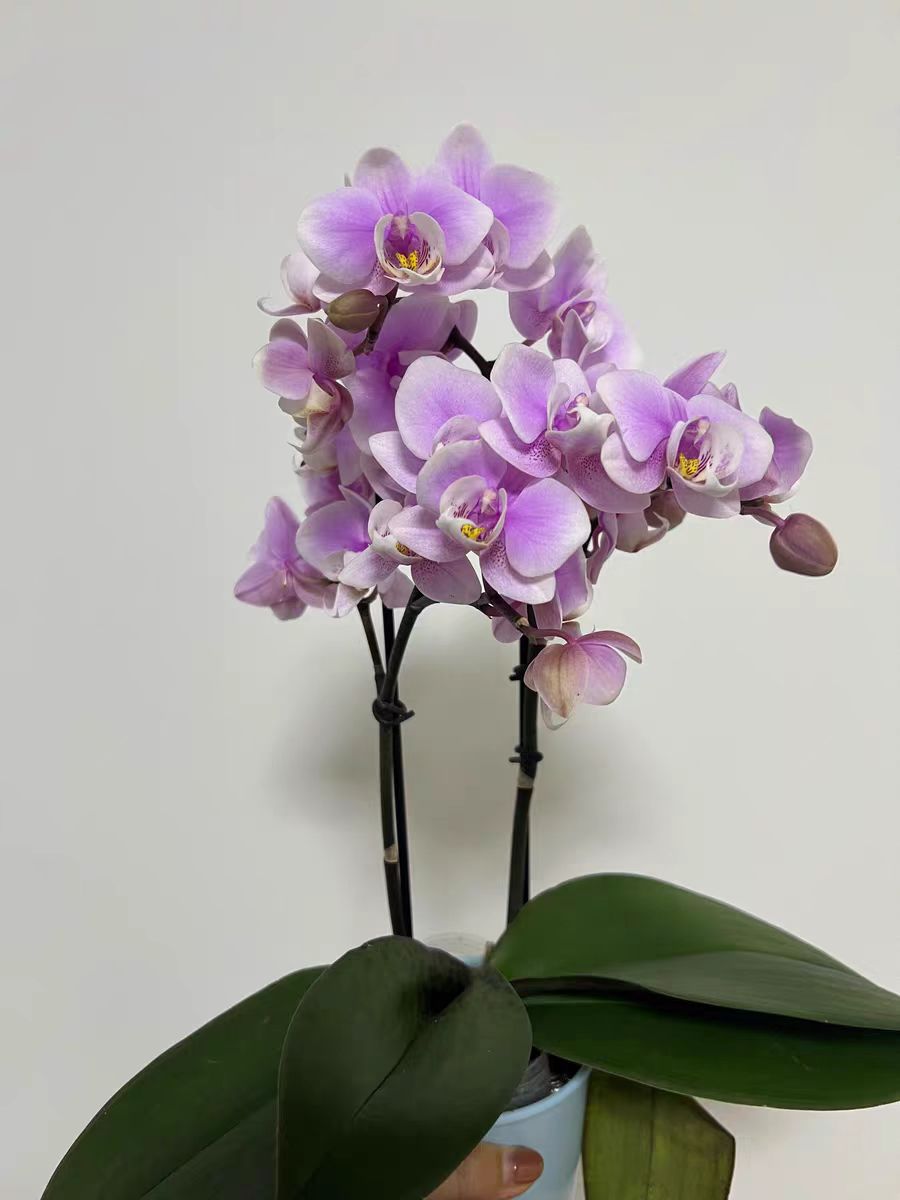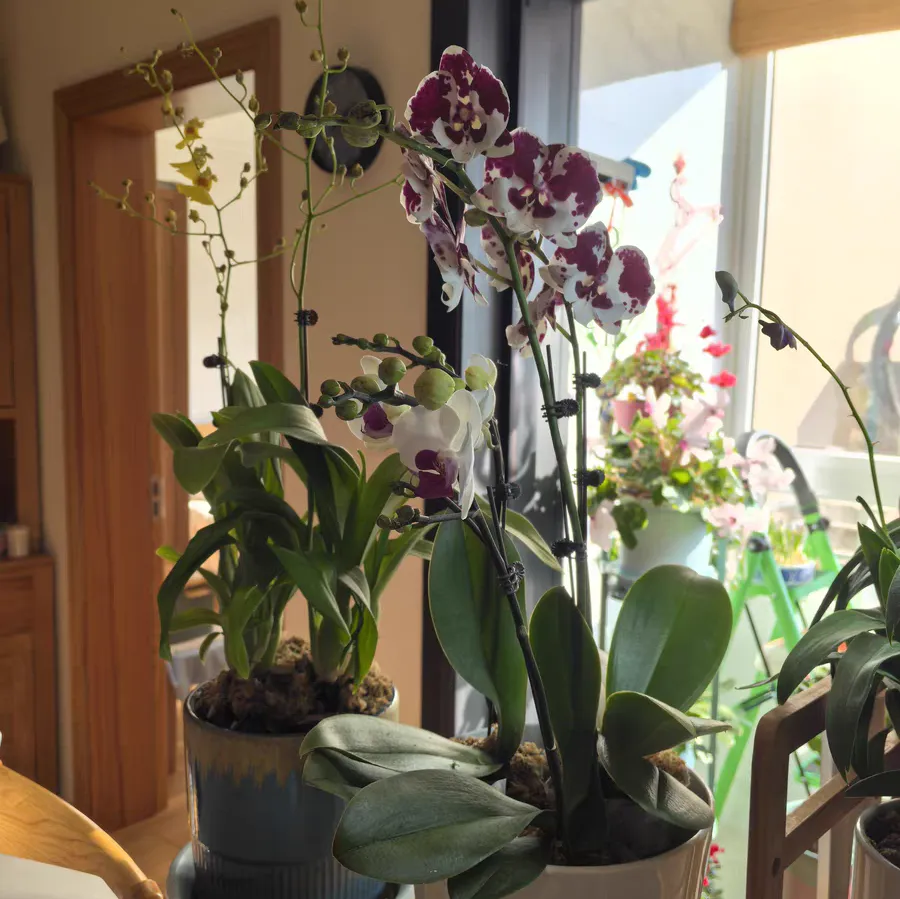Planting multiple Phalaenopsis together can not only create a potted landscape with rich layers and colorful hues but also add to the joy of flower - growing. However, when planting in groups, some issues need to be noted, especially how to prevent root rot caused by poor air permeability.
Steps for Planting Multiple Phalaenopsis in a Group:
Selecting the Flowers
Degree of Bloom: Choose Phalaenopsis with plump flowers, bright colors, and no damage. Ensure that each plant has at least four open flowers.
Height: According to the size of the container and design requirements, select Phalaenopsis with similar heights to ensure the overall harmony of the combined potted plant.
Orientation: The blooming directions of the flower materials should be neat, which is convenient for subsequent combination and fixation.
Conceptual Design:
Before starting the combination, first conceive the outline, layers, and sense of symmetry of the potted plant. You can design according to personal preferences and the shape of the container.
Prepare suitable flower pots and potting soil. The flower pot should have good air permeability and water - retention capacity, such as terracotta pots or plastic pots. The potting soil can be special orchid soil or self - made mixed soil (such as a mixture of leaf mold, perlite, vermiculite, etc. in a certain proportion).
Placement and Fixation:
Use a foam board to raise the bottom of the flower pot. This makes it easier to place the Phalaenopsis in sequence from the back to the front. Adjust the height and orientation so that the flowers are arranged in a scattered and orderly manner with distinct layers.
Use tools such as wire, clips, or tape to gently but firmly fix the Phalaenopsis, being careful not to damage the flower materials. When fixing, start from each flower and proceed in an orderly manner from the back to the front and from left to right.
For a combination of multiple Phalaenopsis, the arrangement can be adjusted as needed, such as one on the left and one on the right, one above and one below, or in a heart - shaped pattern, etc., to create a rich sense of layers.
Filling the Soil: After fixing the Phalaenopsis, fill the potting soil around the flower materials. Be careful not to compact the soil, as this may affect the respiration and growth of the Phalaenopsis. After watering thoroughly, place it in a warm and well - ventilated location indoors, avoiding direct cold air.
Methods to Prevent Root Rot Caused by Poor Air Permeability in a Group of Phalaenopsis
Watering Rationally: Follow the watering principle of "watering when the soil is dry and soaking thoroughly". Wait until the surface of the potting soil is slightly dry before watering, and each time water should be poured thoroughly to avoid waterlogging that causes root rot. When watering, use a slow - trickle method to ensure that water seeps in slowly from the edge of the pot, avoiding direct contact of water droplets with the leaves and flowers of the Phalaenopsis.
Choosing Breathable Potting Soil: Using potting soil with good air permeability is crucial for preventing root rot. You can choose potting soil composed of a mixture of perlite, coconut coir, pine bark, etc. These materials have good air permeability and water - retention capacity. Regularly check the air permeability of the potting soil and replace it with new soil if necessary.
Controlling Temperature and Humidity: Phalaenopsis prefers a warm and humid environment, but excessive humidity and temperature can easily lead to root rot. Therefore, place the Phalaenopsis in a warm and well - ventilated location indoors and maintain appropriate humidity. Avoid leaving the Phalaenopsis in a closed space for a long time, as this may impede the normal respiration of the plant and increase the risk of pest and disease attacks.
Regular Inspection and Maintenance: Regularly check the growth status of the Phalaenopsis. If phenomena such as yellowing leaves or root rot are found, take timely measures for treatment. During the growing season, fertilize regularly to provide sufficient nutrients. You can choose special orchid fertilizers or compound fertilizers and apply them according to the dosage indicated in the instructions. Pay attention to the prevention and control of pests and diseases, such as aphids, spider mites, anthracnose, etc. Once discovered, immediately take corresponding control measures.
Through the above steps and methods, we can successfully plant multiple Phalaenopsis together and effectively prevent root rot caused by poor air permeability. During the maintenance process, we need to patiently and carefully observe the growth status of the Phalaenopsis and adjust and manage the maintenance according to the actual situation.
How to Plant Multiple Phalaenopsis in a Group?

Share with
Tagged in :




Leave a Reply